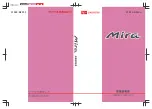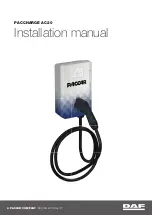
Your vehicle and the environment
196
How to improve economy and
minimise pollution
Fuel economy, environmental impact and wear on the engine,
brakes and tyres depend largely on the way you drive the vehicle. By
adopting an economical driving style and anticipating the traffic
situation ahead, you can reduce fuel consumption by 10-15%. The
following section gives you some tips on lessening the impact on
the environment and reducing your operating costs at the same
time.
Anticipate well in advance
A car uses most fuel when accelerating. If you anticipate hazards
and speed changes well in advance, you will need to brake less and
thus accelerate less. Wherever possible, let the car slow down grad-
ually with a gear engaged, for instance when you can see that the
next traffic lights are red. This takes advantage of the engine
braking effect, reducing wear on the brakes and tyres. Emissions
and fuel consumption will drop to zero due to the overrun fuel cut-
off.
Change gear early to save fuel
An effective way of saving fuel is to change up quickly through the
gears. Running the engine at high rpm in the lower gears uses an
unnecessary amount of fuel.
Manual gearbox: Shift up to second gear as soon as possible. If
possible, we recommend shifting up to the next gear at approx.
2,000 rpm.
Automatic gearbox: Press the accelerator slowly and avoid using
the “kick-down” feature.
Avoid driving at high speed
Avoid travelling at top speed. Fuel consumption, exhaust emissions
and noise levels all increase very rapidly at higher speeds. Driving at
moderate speeds will help to save fuel.
Do not let the engine idle for longer than necessary
It is worthwhile switching off the engine when waiting in a traffic
jam, at level crossings or at traffic lights with a long red phase. The
fuel saved after only 30 - 40 seconds is greater than the amount of
fuel needed to restart the engine.
The engine takes a very long time to warm up when it is running at
idling speed. Mechanical wear and pollutant emissions are also
especially high during this initial warm-up phase. It is therefore best
to drive off immediately after starting the engine. Avoid running the
engine at high speed.
Regular servicing
Regular servicing can establish a basis for good fuel economy
before you start driving. A well-serviced engine gives you the
benefit of improved fuel efficiency as well as maximum reliability
and an enhanced resale value. A badly tuned engine can consume
up to ten percent more fuel than necessary.
Avoid short trips
The engine and emission control system need to reach their proper
working temperature in order to minimise fuel consumption and
emissions.
A cold engine uses disproportionately more fuel. The engine only
reaches its working temperature after about four kilometres, when
fuel consumption will return to a normal level. This is the reason
why we recommend avoiding short trips wherever possible.
Maintain the correct tyre pressures
Always make sure the tyres are inflated to the correct pressures
⇒
page 232 to save fuel. If the tyre pressures are just 0.5 bar too low,
this can increase the fuel consumption by as much as 5 %. Due to
the greater rolling resistance, under-inflation also increases tyre
wear and impairs handling.
Do not use winter tyres all through the year; they will increase fuel
consumption by up to 10 %.
document_0900452a81793dcc.book Seite 196 Mittwoch, 21. März 2007 5:42 17
Summary of Contents for S5 CABRIOLET
Page 1: ...Audi S5 englisch 04 07 Audi S5 Owner s Manual rz 2007 5 42 17 ...
Page 8: ...6 document_0900452a81793dcc book Seite 6 Mittwoch 21 März 2007 5 42 17 ...
Page 9: ...7 Controls document_0900452a81793dcc book Seite 7 Mittwoch 21 März 2007 5 42 17 ...
Page 152: ...150 document_0900452a81793dcc book Seite 150 Mittwoch 21 März 2007 5 42 17 ...
Page 153: ...151 Safety document_0900452a81793dcc book Seite 151 Mittwoch 21 März 2007 5 42 17 ...
Page 186: ...184 document_0900452a81793dcc book Seite 184 Mittwoch 21 März 2007 5 42 17 ...
Page 187: ...185 Driving tips document_0900452a81793dcc book Seite 185 Mittwoch 21 März 2007 5 42 17 ...
Page 210: ...208 document_0900452a81793dcc book Seite 208 Mittwoch 21 März 2007 5 42 17 ...
Page 244: ...242 document_0900452a81793dcc book Seite 242 Mittwoch 21 März 2007 5 42 17 ...
Page 245: ...243 Self help document_0900452a81793dcc book Seite 243 Mittwoch 21 März 2007 5 42 17 ...
Page 278: ...276 document_0900452a81793dcc book Seite 276 Mittwoch 21 März 2007 5 42 17 ...
Page 279: ...277 Technical data document_0900452a81793dcc book Seite 277 Mittwoch 21 März 2007 5 42 17 ...
Page 284: ...282 document_0900452a81793dcc book Seite 282 Mittwoch 21 März 2007 5 42 17 ...
Page 285: ...283 Index document_0900452a81793dcc book Seite 283 Mittwoch 21 März 2007 5 42 17 ...
















































